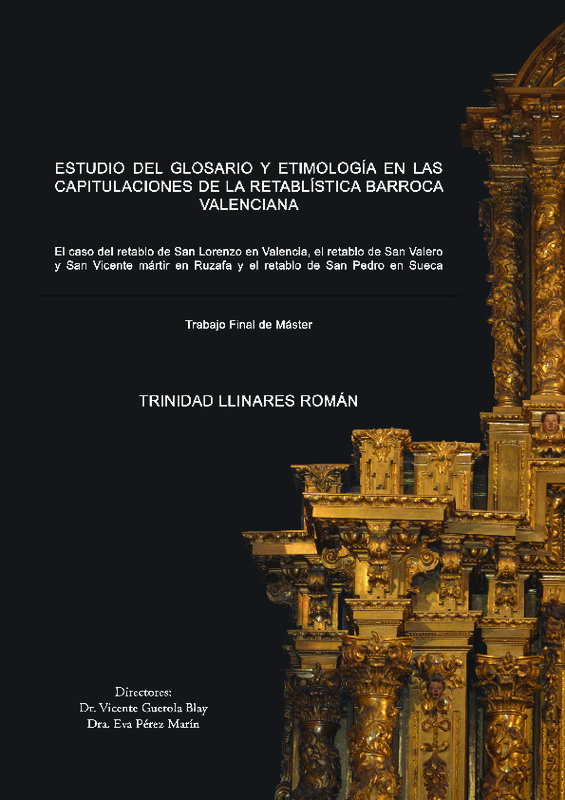JavaScript is disabled for your browser. Some features of this site may not work without it.
Buscar en RiuNet
Listar
Mi cuenta
Estadísticas
Ayuda RiuNet
Admin. UPV
Estudio del glosario y etimología en las capitulaciones de la retablística barroca valeciana: el caso del retablo de San Lorenzo, el retablo de San Valero y San Vicente Mártir en Ruzafa y el retablo de San Pedro en Sueca
Mostrar el registro completo del ítem
Llinares Román, MT. (2013). Estudio del glosario y etimología en las capitulaciones de la retablística barroca valeciana: el caso del retablo de San Lorenzo, el retablo de San Valero y San Vicente Mártir en Ruzafa y el retablo de San Pedro en Sueca. http://hdl.handle.net/10251/44872
Por favor, use este identificador para citar o enlazar este ítem: http://hdl.handle.net/10251/44872
Ficheros en el ítem
Metadatos del ítem
| Título: | Estudio del glosario y etimología en las capitulaciones de la retablística barroca valeciana: el caso del retablo de San Lorenzo, el retablo de San Valero y San Vicente Mártir en Ruzafa y el retablo de San Pedro en Sueca | |||
| Autor: | Llinares Román, Maria Trinidad | |||
| Director(es): | ||||
| Entidad UPV: |
|
|||
| Fecha acto/lectura: |
|
|||
| Resumen: |
[EN] To understand the building and execution of an altarpiece is necessary to resort to his contracting and to study it in an exhaustive way if you want to know in detail every part of the piece. From this beginning and ...[+]
[ES] Para entender la fabricación y ejecución de un retablo es necesario recurrir a su contratación y estudiarla de manera exhaustiva si se quiere conocer al detalle cada parte de la pieza. De este principio y necesidad ...[+]
|
|||
| Palabras clave: |
|
|||
| Derechos de uso: | Reconocimiento - No comercial - Sin obra derivada (by-nc-nd) | |||
| Editorial: |
|
|||
| Titulación: |
|
|||
| Tipo: |
|







